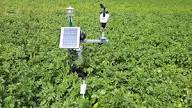The widespread concern regarding synthetic pesticides in agriculture cannot overshadow their necessity, nor is a rapid decline in their use anticipated, making consumer protection and user education imperative.
When applied intelligently and knowledgeably, chemical pest control methods can be both effective and safe.
Understanding the classification, mode of action, properties, metabolism, and residues of pesticides is critical for users to assess benefits and potential hazards accurately, enabling judicious insecticide selection and formulation of efficient control measures tailored to specific circumstances.
Of the numerous insecticides reported as toxic and/or effective against stored product pests, only a limited number are approved for use on stored grain with established maximum residue limits.
Insecticides are classified based on mammalian toxicity, chemical origin or composition, mode of entry, and formulation.
A primary objective of toxicology is determining safe exposure levels to potentially toxic substances for humans and the environment.
Safe levels are traditionally estimated through laboratory toxicity bioassays by calculating the non-observable effect level (NOEL) for various organisms representing taxa such as mammals, birds, fish, crustaceans, and algae.
Read Also: How to determine if your Housing is Conducive for your Fishes
Strategic Use of Pesticides in Integrated Pest Management

Pesticides are employed in Integrated Pest Management (IPM) programs when effective alternatives are unavailable or insufficient to prevent pest populations from reaching damaging levels.
The focus is on maximizing pesticide benefits while minimizing potential risks.
Pesticide selection must comply with the pesticide label and all state and federal regulations, considering effectiveness against the target organism, compatibility with the host plant, effects on beneficial organisms, environmental and user safety, and cost.
Whenever possible, materials least toxic to humans and non-target organisms, with minimal risk of contaminating ground and surface waters, are preferred.
Rationale for Minimizing Pesticide Use in Agriculture
Several challenges arise from relying solely on pesticides for pest control, including pest resistance, increased costs, toxicity to fish, wildlife, beneficial natural enemies, and other non-target organisms, concerns about human health and safety, groundwater contamination, and overall environmental quality.
Pesticides, including insecticides for insects, herbicides for weeds, fungicides for fungi, and nematicides for nematodes, are chemicals designed to destroy, repel, or reduce pest infestations to protect crops from damage.
Advantages of Pesticides in Crop Protection
Pesticides are readily available and easy to use. When resistance is not an issue, pesticides are generally highly effective for controlling pests. Treatments can be implemented rapidly with minimal lag time and applied over large areas to manage significant pest populations.
Pesticide treatments are often cost-effective, particularly when alternatives require substantial human labor. For many pests, no effective, reliable, non-chemical alternatives exist, making chemical pesticides a last resort.
Read Also: How many plots of land do I need to start fish farming?
Challenges of Pesticide Overuse in Agriculture

1. Pesticide Resistance in Pest Populations: Efforts to achieve better pest control have increased resistance due to frequent applications and higher dosages, heightening selection pressure.
Naturally resistant individuals survive treatments, breeding and passing resistance traits to offspring, making subsequent generations harder to control with the same pesticides.
Reducing pesticide use and alternating among classes with different modes of action can mitigate resistance, prolonging the effective life of essential pesticides.
2. Toxicity to Beneficial Organisms and Non-Target Species: Natural enemies, such as predators, parasites, or competitors, help suppress pest populations. For instance, aphids are often controlled by natural enemies. Broad-spectrum, non-selective pesticides are more harmful to beneficial species than to pests, causing pest resurgence at faster rates than natural enemy recovery.
Without natural controls, primary and secondary pests reach damaging levels quickly, necessitating additional treatments that further reduce natural enemies and increase resistance potential. Selecting less toxic alternatives enhances natural enemy survival and pest control effectiveness.
3. Public Health and Environmental Impacts of Pesticides: Public concern is growing over pesticide effects on human health, wildlife, groundwater, and environmental quality. Issues include drift to non-target areas, water contamination, and food residues.
Applicators face the highest exposure risks and must apply pesticides safely and judiciously to address public concerns.
Promoting Reduced-Risk Pesticides in Agriculture
The EPA has established a “Reduced Risk” pesticide category to encourage development, registration, and use of products with lower risks to human health and the environment.
New conventional pesticides qualify for “Reduced Risk” status if they exhibit low risk to human health, low toxicity to non-target organisms, low potential for contaminating groundwater, surface water, or other environmental resources, and enhance IPM adoption and effectiveness.
Do you have any questions, suggestions, or contributions? If so, please feel free to use the comment box below to share your thoughts. We also encourage you to kindly share this information with others who might benefit from it. Since we can’t reach everyone at once, we truly appreciate your help in spreading the word. Thank you so much for your support and for sharing!
Frequently Asked Questions
We will update this section soon.

